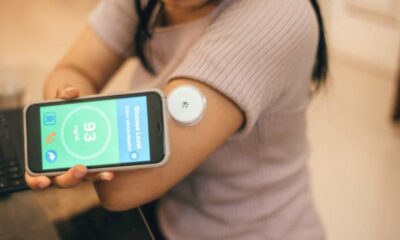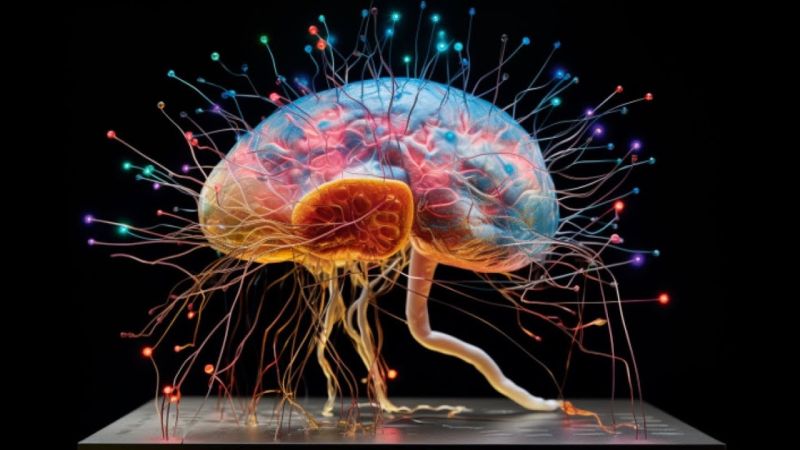Researchers created a tiny device, about the size of a grain of rice, that can concurrently test a variety of therapies for difficult brain malignancies including gliomas. The device, which is surgically implanted into a patient’s tumour and then removed, provides real-time information on how drugs affect the tumour microenvironment. By doing this, it gets beyond the restrictions imposed by the testing techniques now in use and provides a more individualised course of treatment.
Key details
During surgery, the ground-breaking technology allows doctors to test the effects of up to 20 different medications on a patient’s brain tumour in real-time without endangering the patient.
Around 20,000 Americans are affected by gliomas each year, one of the deadliest and most difficult types of brain cancer to treat.
By studying the tumor’s response to medications in real-time, within the patient’s body rather than in lab circumstances, the researchers hope to optimise glioma therapy.
In order to test treatments on patients with gliomas, a form of tumour that develops in the brain or spinal cord, researchers from Brigham and Women’s Hospital, one of the founding institutions of the Mass General Brigham healthcare system, have created a gadget.
In a phase 1 clinical trial, the device, which is intended to be used during standard of care surgery, had no negative effects on the patients. It offers previously unattainable insight into how medications affect glioma tumours.
The device’s pilot clinical trial’s findings were released in Science Translational Medicine.
“In order to make the greatest impact on how we treat these tumors, we need to be able to understand, early on, which drug works best for any given patient,” said Pierpaolo Peruzzi, MD, PhD, co-principal investigator and co-corresponding author, assistant professor in the department of neurosurgery at Brigham and Women’s Hospital.
“The problem is that the tools that are currently available to answer this question are just not good enough. So we came up with the idea of making each patient their own lab, by using a device which can directly interrogate the living tumor and give us the information that we need.”
Gliomas are a form of tumour that affects the brain and spinal cord that affects about 20,000 Americans annually. Additionally among the deadliest forms of brain cancer, gliomas are notoriously challenging to cure.
Because patients can only be treated with one method at a time, testing several drug combinations in tumour cells might be challenging for developing targeted therapy for glioma. This has been a major obstacle for difficult-to-treat malignancies like gliomas, a prospective target for combination therapy.
To create a device that can get around some of the obstacles to precision medicine in gliomas, Peruzzi collaborated closely with co-principal investigator Oliver Jonas, PhD, an associate professor in the department of Radiology at the Brigham. These tiny gadgets are inserted into the tumour of a patient during surgery and are then taken out before the procedure is finished.
“It’s important that we are able to do this in a way that best captures the features of each patient’s tumor and, at the same time, is the least disruptive of the standard of care,” said Peruzzi. “This makes our approach easy to integrate into patients’ treatment and allows its use in real life.”
During the two to three hours it takes to implant the device, it delivers incredibly small dosages of up to 20 different medications to the patient’s brain tumour. During the procedure, the device is taken out, and the surrounding tissue is taken back to the lab for examination.
This method of performing studies provides an unmatched capacity to evaluate the impact of medications on the tumour microenvironment, the cells immediately surrounding cancer cells that can make up nearly half the mass of a tumour. The device works while the tumour is still in the body.
“This is not in the lab, and not in a petri dish,” said Peruzzi. “It’s actually in real patients in real time, which gives us a whole new perspective on how these tumors respond to treatment.”
Six patients who were having a glioma tumour removed from their brains were used in the current trial to test the researchers’ technology. The devices had no negative effects on any of the patients, and the researchers were able to gather useful scientific information from them, such as how the reaction varies depending on drug concentrations or what chemical changes each drug causes in the cells.
Although the trial showed that the gadget was secure and simple to integrate into surgical practise, the researchers are still figuring out exactly how the information it collects should be used to enhance glioma therapy.
The patients receive the device through a minimally invasive procedure 72 hours before their primary operation as part of the researchers’ two-stage version of their treatment.
“We’re optimistic that this is a new generation approach for personalized medicine,” said Peruzzi. “The ability to bring the lab right to the patient unlocks so much potential in terms of the type of information we can gather, which is new and exciting territory for a disease that has very few options at present.”

 Diabetology2 weeks ago
Diabetology2 weeks ago
 Diabetology2 weeks ago
Diabetology2 weeks ago
 Diabetology2 weeks ago
Diabetology2 weeks ago
 Diabetology1 week ago
Diabetology1 week ago
 Diabetology2 days ago
Diabetology2 days ago
 Diabetology1 day ago
Diabetology1 day ago
 Diabetology1 day ago
Diabetology1 day ago



